Comet Tsuchinshan-ATLAS (C/2023 A3) & Clouds
Posted: 17 October 2024
As forecast, clouds began appearing mid-morning on Wednesday, 16 October 2024. Sunset was at 1748 MST. I went outside shortly sunset to try to observe Comet Tsuchinshan-ATLAS (C/2023 A3). This is how the western sky appeared at 1802 MST.
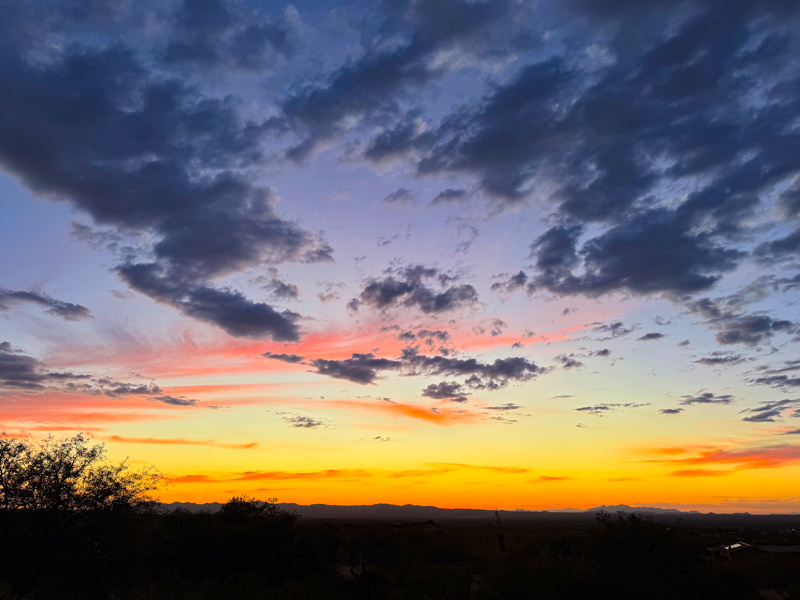
The almost full Moon was low in the eastern sky and most times it was behind clouds.
1833 MST: Observed the comet using 7x50 binoculars.
1841 MST: I could occasionally see the comet with the naked eye. It was faint, but there was a long tail visible at times.
1852 MST: The comet's tail was about 5° long in the binoculars.
1853 MST: The Moon had been behind clouds, but now the bright moonlit sky was making the comet difficult to see with the naked eye.
1932 MST: I watched Venus set behind some distant mountains using the 7x50 binoculars. It was a bright red color and then it turned a bright blue just before it disappeared. This is the same effect as the "green flash" occasionally seen with a setting Sun.
The following photos are in chronological order.
1838 MST: Comet Tsuchinshan-ATLAS (top), D850 DSLR (f/1.8, 1 second, ISO 800, FL 50mm)
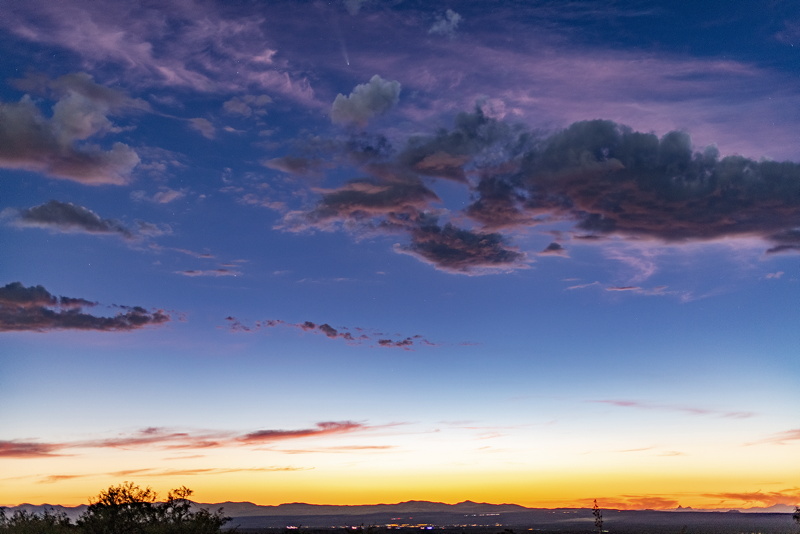
Click or tap on image for larger version
1849 MST: Comet, iPhone 15 Pro Max (5X lens)
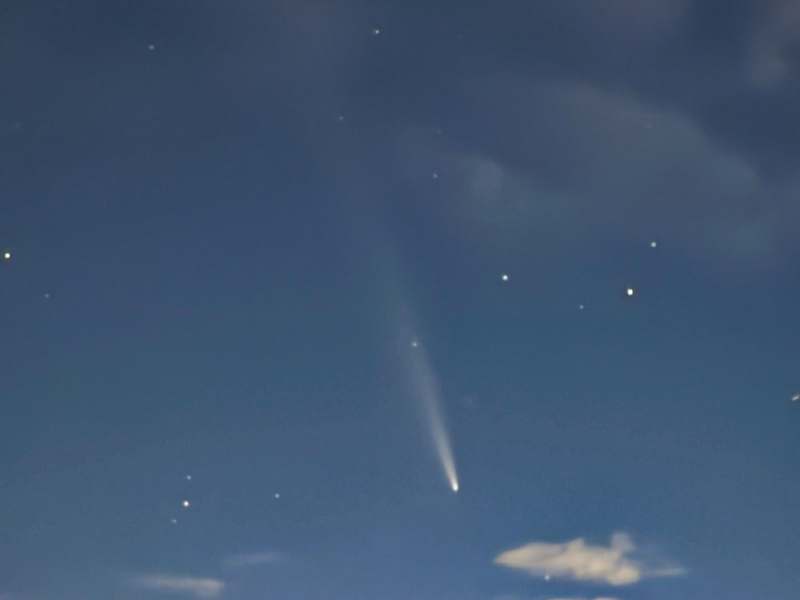
1902 MST: Comet Tsuchinshan-ATLAS & Crepuscular Rays, D850 DSLR (f/2.8, 10 seconds, ISO 800, FL 50mm)
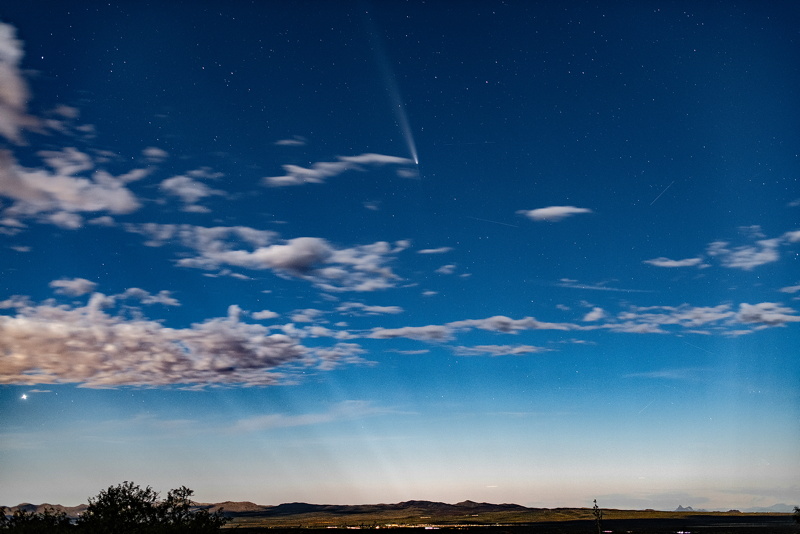
Click or tap on image for larger version
1920 MST: Comet Tsuchinshan-ATLAS & Comet Weasner (jet contrail), iPhone 15 Pro Max (2X lens)
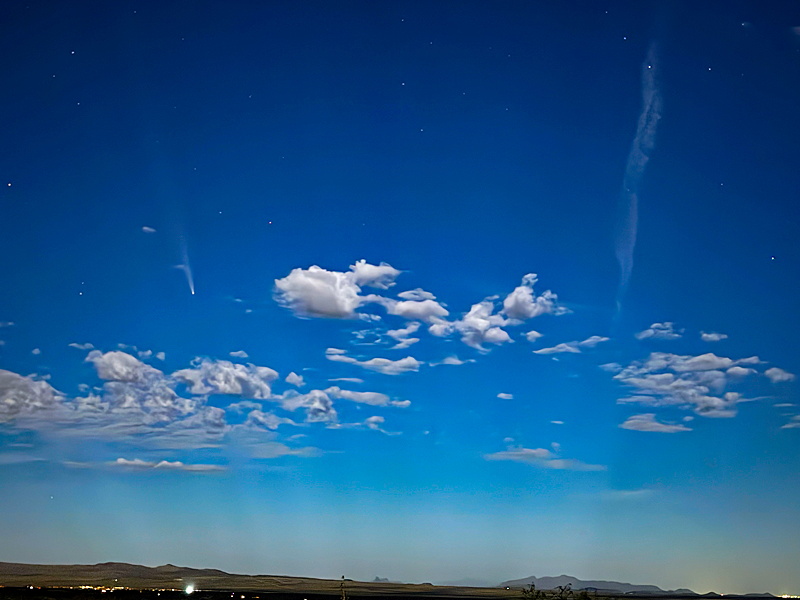
1921 MST: Comet Tsuchinshan-ATLAS, D850 DSLR (f/1.8, 4 seconds, ISO 800, FL 50mm)
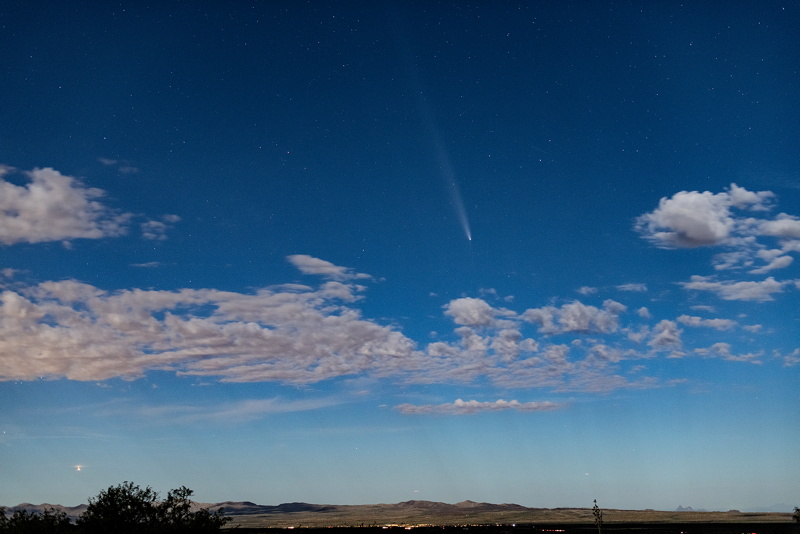
Click or tap on image for larger version
1923 MST: Clouds & Moon, iPhone 15 Pro Max (2X lens)
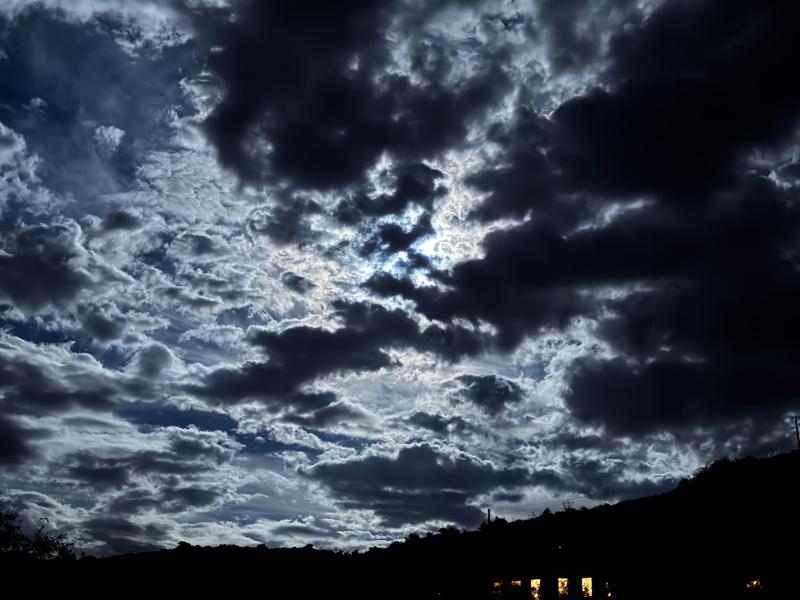
1939 MST: Where is the Comet?, iPhone 15 Pro Max (1X lens)
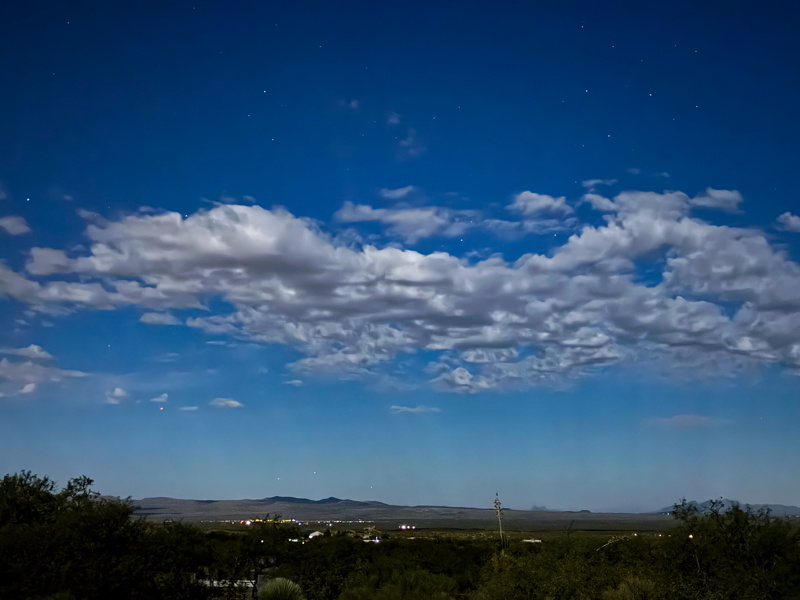
1942 MST: Moon, iPhone 15 Pro Max (5X lens)
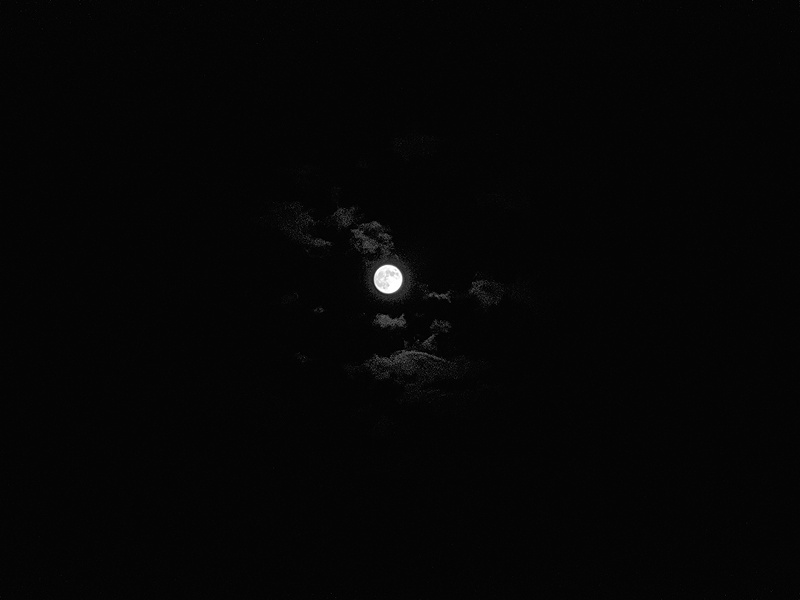
Comments are welcome using Email. Please read the Email Etiquette guidance.
Cassiopeia Observatory Home Page
Copyright ©2024 Michael L. Weasner / mweasner@mac.com.
URL = http://www.weasner.com/co/Reports/2024/10/17/index.html
